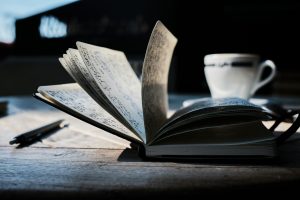Meheli Banerjee: From Lab Coats to Literature: Crafting Manuscripts Without the Smoke and Mirrors
As I hit the two-year mark of our PhD journey, it’s time to put the Excel sheets, statistical analyses, and programming codes into words. Opinions on this part of the research – writing the manuscript – vary widely, but it can be a bittersweet experience. The first challenge is bringing everything together in our heads, which is easier if we’ve had a good folder-arranging system over the years. Now that we’re nearing the stage of writing a manuscript, let’s discuss what goes on backstage. Let’s grab our strongest cup of coffee and dive into this.
As taught in my research group, every good manuscript starts with the hypothesis. The hypothesis is the cornerstone of the research and an important anchor for the audience. It explains the central question behind our 14-32 pages of hard work and why it was necessary. This hypothesis will guide our research narrative and provide the foundation for the entire study.
Before diving headfirst into our great hypothesis, the next plan is to take a stroll through the warehouse of existing research on the topic. This helps us understand how much our area of interest has advanced and helps refine our hypothesis. Identifying gaps in previous research that our current question will fill shows the significance and impact of our study. It’s like finding hidden treasures that pave the way for our discovery.
Once we have a good idea of what we’re looking for, the next step is to plan the “how.” Here, we get knee-deep into planning our experiments. There are different ways to do this depending on our study, but it’s often helpful to predict some failures in experiments and assign time to rerun them. In the manuscript, the methods section should be detailed enough for other scientists to replicate, not like magicians guarding their secrets. Documenting our experiments well is crucial so that two years later, we don’t have to scratch our heads about the parameters we used.

The results section is where we get to show off our hard work. Presenting our results clearly and concisely, using tables, graphs, and charts to illustrate our findings, is essential. Our goal is to make the data as digestible as possible. Think of this section as the big reveal in a mystery novel – we want our readers on the edge of their seats.
Once the results are laid out, we can finally discuss them. This is where we share our perspective on the results, their significance, and how they relate to our original hypothesis. This is our chance to showcase our critical thinking skills and scientific insight. It’s the section where our voice as researchers truly shines through.
The conclusion is the grand finale, where we summarize our research and its implications. Keeping it short, sweet, and impactful is key. We highlight the key takeaways and the broader impact of our work. Think of it as our manuscript’s “mic-drop” moment—leaving our readers impressed and eager to learn more.
Like every good movie ends with credits, research papers need their references. The references section is a tribute to the scientific community that helped pave the way for our research. Using the appropriate citation style, and double-checking every entry is like the roll call of everyone who contributed to the journey.
We’re almost at the end of the writing journey after this step. A few final touches such as proofreading to check for clarity and coherence, and getting feedback from colleagues and mentors, are essential. Once we’ve incorporated all of this, we can do a small victory dance. Treat ourselves to something nice and give ourselves a pat on the shoulder. So far, this is what I think is the guide to writing a manuscript, but I will find out if I underestimated any of it. I hope to post about my post-manuscript writing experience and compare my thoughts with the actual affair. Till then, to all the researchers out there, may the data force be with us!
Meheli Banerjee works as a doctoral researcher in the Neuro-Innovation PhD programme. Her research focuses on non-coding RNAs in the context of seizures and traumatic brain injury.